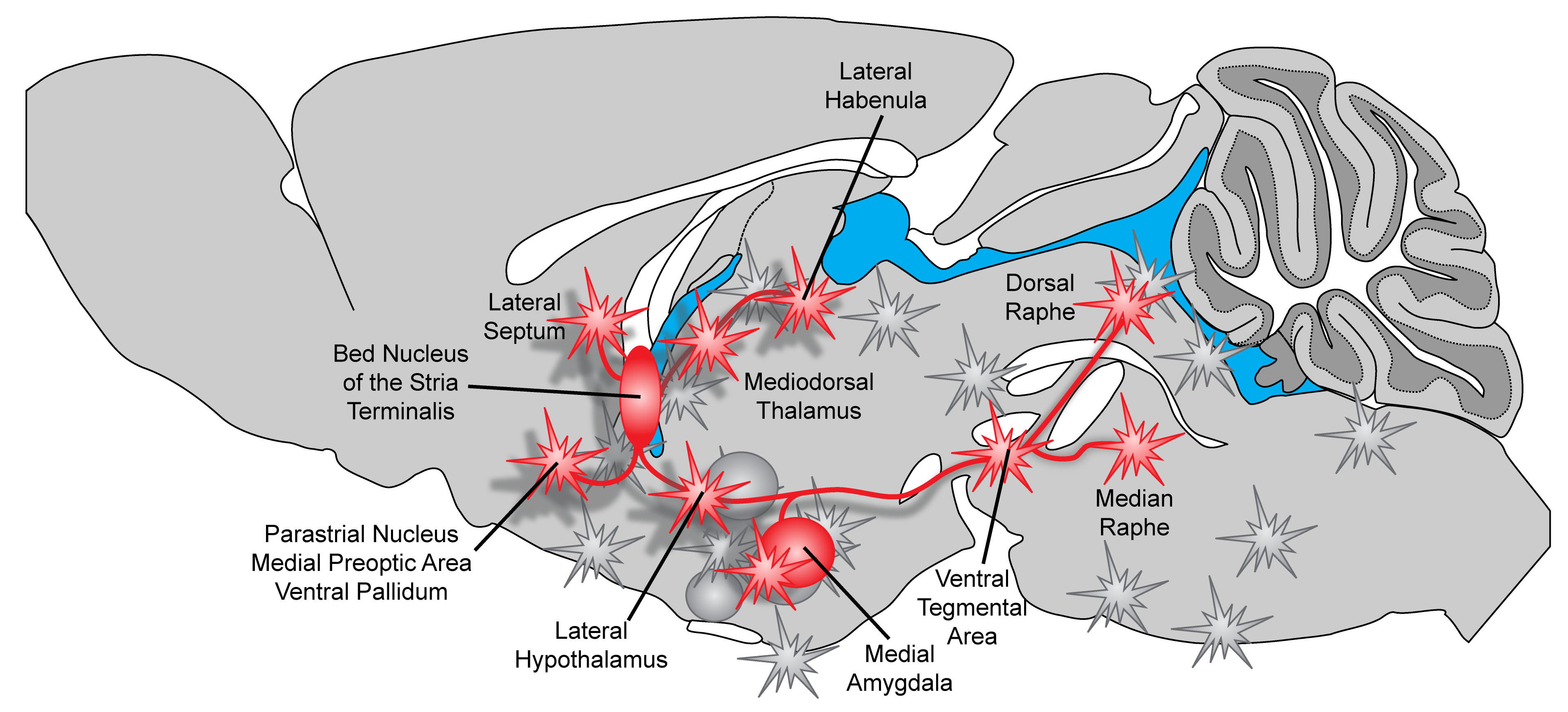Research
Research
Projects in the Rood Lab
Neurocircuitry underlying social behavior
Many brain areas are required to process the complicated sensory signals encountered during a social interaction and to create a situationally appropriate response. We are interested in understanding which brain regions work in social behavior networks to respond to and bring about social interaction. At present we are focusing on brain regions that receive vasopressin signals from the extended amygdala as these signals seem to impart information of the type of interaction or possibly the hedonic value of the interaction. One interesting connection within the vasopressin social behavior network that we are examining is the link to the dorsal raphe serotonin system, which is involved in mood regulation and inhibition of aggression.

Impact of gonadal steroid hormones on the serotonin system
Roughly 40-50% of serotonin neurons in mice have estrogen receptor alpha and or beta suggesting that gonadal steroid hormones can have a broad impact on the function of the overall serotonin system. However, the function of gonadal steroid hormones in the dorsal raphe is poorly understood with just a handful of studies examining the impact of estrogens and testosterone on gene expression in serotonin cells. We are working to determine how the complement of estrogen receptors in serotonin neurons affects gene expression and thus cell function. We are also interested in how estrogen receptor expression may map onto different subtypes of serotonin neurons.